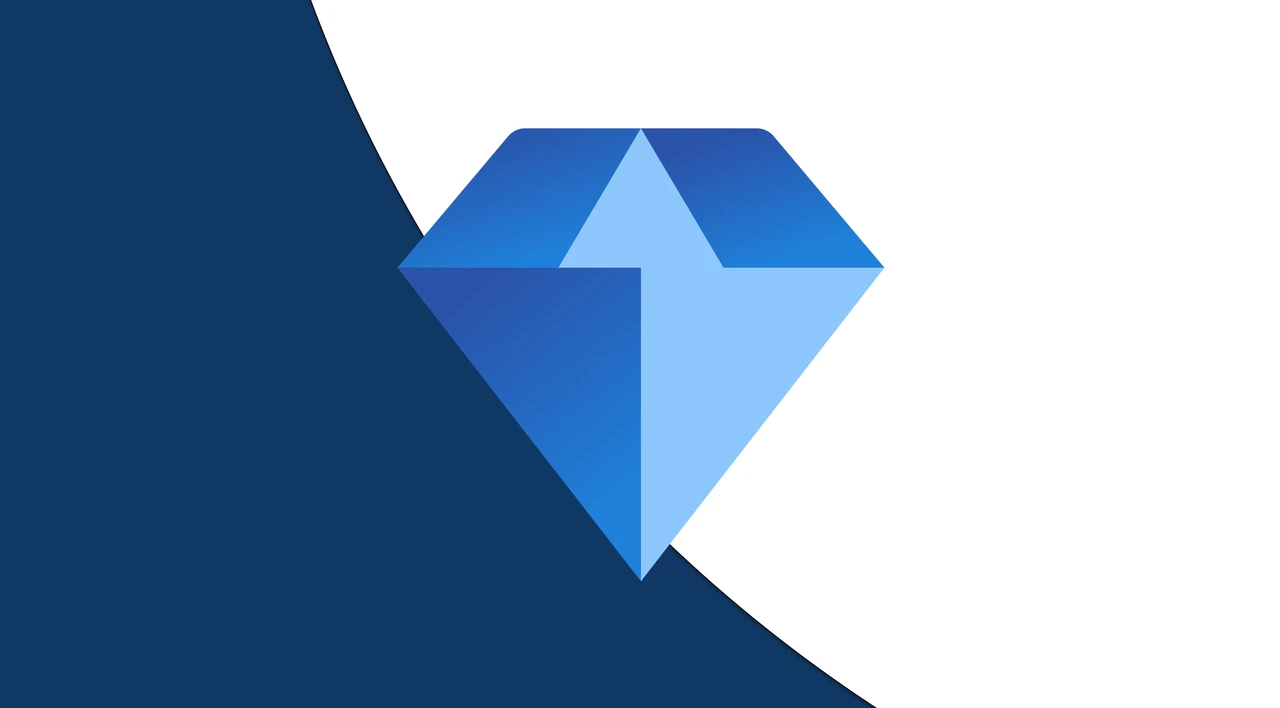SHARE
What is Ruby on Rails? An Overview in 2025

Contents
Contents
Introduction
In the wide world of web application development, Ruby on Rails has gained significant popularity for its elegance, simplicity, and productivity.
Built on the programming language Ruby, Ruby on Rails provides web developers with a robust and efficient framework for building dynamic web applications.
In this article, we will explore what Ruby and Ruby on Rails are, highlight their differences, discuss the uses and relevance of Ruby on Rails, and examine its advantages and disadvantages.
Additionally, we will touch upon alternative web frameworks available for developers in the quest to make web apps. While these other frameworks will involve other programming languages, Ruby developers may find them viable alternatives.

What is Ruby?
The Ruby language is a dynamic, object-oriented programming language known for its simplicity and readability.
Developed by Yukihiro Matsumoto in the mid-1990s, Ruby is designed to prioritize developer happiness and productivity by offering a natural and expressive syntax.
The Ruby programming language is a general-purpose programming language just like its brethren C or Java. However, it is best known for its strong focus on web development.

What is Ruby on Rails?
Ruby on Rails, often referred to simply as Rails, is a web application framework built using Ruby.
It was created by David Heinemeier Hansson in 2004 and has since gained popularity due to its emphasis on convention over configuration and its ability to accelerate development.
Rails is software code built on Ruby and is an open-source framework. Technically, it is a package library named RubyGem.
Ruby on Rails can speed up the development process. For example, its code libraries can offer ready-made solutions for repetitive tasks so the author can focus on business logic rather than the nuts and bolts.
Rails works by combining Rudy with JavaScript, HTML, and CSS to create a web application that executes on a web server.
Rails follows the Model-View-Controller (MVC) architectural pattern, providing a structured approach to building web applications.
What is a Full-Stack Web Framework?
A full-stack framework provides all the tools needed to build web applications from the user interface to server-side database operations.
One of the key principles of Ruby on Rails is that it allows for the development of a complete web application – both back-end and front-end.
This makes Rails outshine many other web frameworks that are more limited in scope.
What is Ruby on Rails Used For?
Ruby on Rails is widely used for developing a broad range of web applications, from small startups to large-scale enterprises.
Its ease of use and emphasis on convention makes it ideal for rapid prototyping, enabling Rails developers to quickly turn their ideas into working applications.
Rails is highly suitable for building database-backed web applications, content management systems, e-commerce platforms, and social networking sites.
It provides a rich set of tools and libraries, including Active Record for database management, Action Pack for handling web requests and responses, and Active Support for utility functions and extensions to Ruby.
Is Ruby on Rails Still Relevant in 2024?
Is Rails dead? Despite the emergence of new web frameworks and technologies, Ruby on Rails remains relevant and widely adopted in the developer community.
It continues to evolve, with regular updates and enhancements, ensuring its compatibility with modern web development practices.
Advantages of Ruby on Rails
Consider some of the positives in creating Rails projects for your next web app.
Rapid Application Development
Ruby on Rails emphasizes convention over configuration, providing a streamlined development process.
One of the downsides of Java web application frameworks is that it requires multiple configuration files which can become tedious. Ruby on Rails avoids forcing the developer to edit a configuration file, which speeds up the design process.
Learning Ruby and using Ruby on Rails is supported by standardized coding practices. This can make it easy for newer coders – or even seasoned ones – to jump into a web project and expect a similar structure.
The framework’s built-in libraries and generators automate common tasks, allowing developers to focus on application logic rather than boilerplate code.
Clean and Readable Code
Ruby’s elegant syntax contributes to writing clean and readable code. Rails follows the principle of “Don’t Repeat Yourself” (DRY), reducing code duplication and improving maintainability.
Ruby on Rails provides a simple, concise, and flexible syntax that is closer to English than some other languages. Consider the standard “Hello World” example:
In the PHP language, you would have to code: echo “Hello World”;
In the Ruby programming language this becomes even simpler: puts “Hello World”
Removing the semicolon and using the more English-friendly command, Ruby wins in the battle for clarity with easier-to-understand and less code.
Strong and Active Community and Extensive Ecosystem
Ruby on Rails benefits from a vibrant community of other developers, offering a wealth of resources, tutorials, and gems (Ruby libraries) to expedite development and solve common problems.
The Rails community is hundreds of thousands strong and has been around for a long time because Ruby is such a mature language.
Scalability
Rails applications can scale effectively, thanks to features such as caching, database optimizations, and support for distributed computing.
Disadvantages of Ruby on Rails
There are, however, some drawbacks to using Rails in your web application development process.
Performance
Ruby on Rails may not be as performant as some other frameworks due to its interpreted nature.
However, with proper optimization techniques and caching mechanisms, it can still handle substantial traffic loads.
Learning Curve
While Ruby is considered easy to learn, becoming proficient in Rails may require some time and effort.
The framework’s vast ecosystem and convention-based approach might pose challenges for developers accustomed to different paradigms.
Alternatives to Ruby on Rails
While Ruby on Rails offers numerous benefits, alternative web frameworks exist for developers seeking different options. Some popular alternatives include:
- Django (Python programming language) – Django is a high-level Python web framework that emphasizes efficiency, scalability, and security. It follows the MVC pattern and shares similarities with Rails in terms of convention over configuration. For further information on Ruby on Rails vs. Django.
- Laravel (PHP programming language) – Laravel is a PHP web framework known for its elegant syntax and expressive features. It provides a robust set of tools for building modern web applications and is often preferred for its performance and scalability. Here you can see a complete overview of Ruby on Rails vs. Laravel.
- Express.js (JavaScript programming language) -Express.js is a minimalist web framework for Node.js, allowing developers to build fast and scalable web applications using JavaScript on both the client and server sides. Read a full comparison of Ruby on Rails vs. Express.js.
Summary
The Ruby on Rails framework remains a popular web framework for developers due to its simplicity, productivity, and convention-driven approach.
It continues to be used extensively in various domains, enabling rapid development and supporting the creation of robust web applications.
While Ruby on Rails has its advantages and disadvantages, its strong community and vast ecosystem contribute to its longevity and relevance in the ever-evolving world of web development.
Frequently Asked Questions
What is a Model View Controller (MVC) framework?
This refers to the methodology or design standard for efficiently relating and separating the user interface from the business logic and data.
What is a Ruby framework?
A Ruby framework is software code that is designed to assist the developer in creating web apps more efficiently while using the Ruby programming language. Ruby on Rails is the most popular Ruby framework.
Is Ruby on Rails good for web development?
Ruby on Rails is used across all types of industries for building web apps and web services. Use cases include applications like marketing websites, management software for a content team, eCommerce sites, and custom web applications.
Is Ruby on Rails good for mobile development?
Ruby on Rails is useful for mobile app development. It is reliable and stable. One of its interpreters, RubyMotion, allows for cross-platform apps that can run on both Apple and Android devices.
Are there a lot of Ruby on Rails developers?
There are at least tens of thousands of Rails developers around the world that form an active community. Rails was listed as the 11th most widely used framework in recent years.
Can you use Ruby on Rails as a back-end framework?
Ruby on Rails excels at being used as a back-end or server-side framework with robust database functionality. It takes less code to write complex functions than Java or Node.
But Ruby on Rails is full-stack, meaning that it has all the necessary tools to develop the back-end and front-end of an application.
What is a Model in Ruby on Rails?
The model component handles data logic and interacts with the app’s database. This data management happens independently from the user interface.
What is a View in Ruby on Rails?
The view component involves the user interface logic of an application. This is often made through an HTML template and rendered in web browsers. This part of the application remains separated from the data handling aspects of the web app.
What is a Controller in Ruby on Rails?
The controller is the component that connects everything together. It is an intermediary between the model and the view. It accepts input and converts it to commands for the model or view.

Digital Product Development: Enhance Your Business Offerings
Flatirons
Sep 12, 2025
React SEO: Optimize Your React Apps for Search Engines
Flatirons
Sep 07, 2025
Will Software Engineers Be Replaced by AI?
Flatirons
Aug 31, 2025
Best Data Analytics Strategy for Business Growth
Flatirons
Aug 25, 2025
Ruby Case Statement: A Simplified Approach to Conditional Logic
Flatirons
Aug 19, 2025
Team Augmentation: Enhance Your Workforce Capabilities
Flatirons
Aug 13, 2025